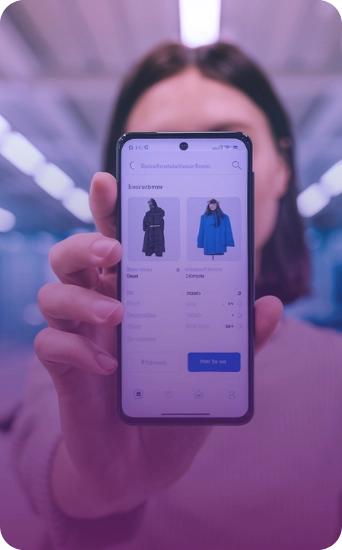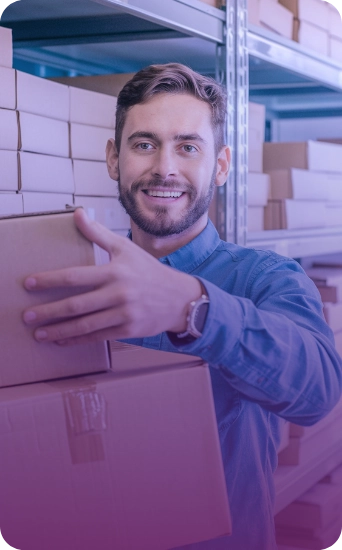There are two types of reverse logistics: post-sale and post-consumer. In the case of e-commerce, reverse logistics is nothing more than the return of a product to its point of origin, i.e. its exchange or return.
In a physical store, the process is quite easy, as the customer returns with the product and invoice and can exchange it for another one on the spot, depending on stock availability. However, in online stores this operation is much more complex than you might think.
At least three factors are fundamental in the logistics flow so that the customer exchanges or returns the product in the shortest possible time: the logistics operator, the supplier or distributor and the e-commerce store.
Regulations, guarantees and consumer rights
The Consumer Defense Code guarantees that consumers have up to seven days to withdraw from a purchase and return it online. But for this to happen, every store needs to have an operational structure to meet this demand.
Delivery failure factors
Before paying for an exchange or return, there is one thing that companies need to consider: the so-called delivery failure factors.
Whenever a product leaves the Distribution Center via the carrier, until it reaches the consumer, some barriers are encountered along the way: non-existent address, product damage due to handling in transport, customer not found and restrictions on streets and avenues.
Carriers usually make two to three attempts to deliver a product. After that, it is returned and enters the reverse logistics management system of the distribution center of origin.
Challenges to be overcome
Getting a product exchanged in the shortest possible time is not always an easy task. This is because the store depends on the customer returning the product, which can be done via the post office or by carrier collection, to assess the condition of the product and start the redelivery process. There is no estimate for this new delivery to be made in a standard time, as many variables are involved in the process.
To mitigate the inconvenience of exchanges and returns, logistics experts recommend that small adjustments are necessary, especially in the clothing segment. According to a survey by Nuvem Envios BrasilThe rate of returns and exchanges in the country was around 10% in 2021. In some sectors, such as clothing, this percentage could reach 30%.
Some solutions to reduce the rate of returns are to detail the characteristics of the products as much as possible on their respective digital pages, insert a table with clothing measurements in universal standards, and publish reviews and considerations from other buyers, as they are often useful references for other customers.
Other challenges are also found in the food, medicine and cosmetics categories. In these categories, the high rates of returns are due to the irregular standardization of batches, i.e. some batches are indicated by letters, others only by numbers. This makes it difficult to monitor the expiration date of products and the consequence is that more attentive customers return them.
Technology at the service of reverse logistics
The entire reverse logistics process is made easier with the use of technology. Whether after-sales or after-consumption, the operational process gains in agility and efficiency, as well as reinforcing brand positioning and providing a positive customer experience.
The challenge here is to make the consumer trust the delivery process and receive their goods in perfect condition. And for the exchange process, when it happens, to be simple for the consumer, it's important to work with transparency and agility.
To do this, some requirements are fundamental: hiring an efficient carrier is the main action, as well as investing in intelligent software management processes, platforms that classify what is common delivery and what needs greater attention, such as route planning for returns, monitoring and traceability.
The future: new forms of delivery and distribution are possible
Consumers often choose to buy online because of the facilities such as not having to face queues and traffic, as well as any unforeseen events, especially on special dates. When we prefer to buy a product from an online store, the last thing we expect is to experience any kind of inconvenience. But what about when the product that arrives isn't the one you've chosen?
If you have to return the product, depending on how the company handles reverse logistics after-sales, it can be a headache for the buyer. To avoid dissatisfaction and frustration, logistics is fundamental to reversing any dissatisfaction and regaining the consumer's trust, increasing the chances of repurchase in the future.
In order to speed up both the delivery process and reverse logistics or even normal logistics, experts agree that the trend in the near future is for companies to start investing in the creation of mini-hubs (smaller storage centers). Able to shorten delivery distances, mini-hubs reduce costs for carriers who often have to travel from one state to another to make deliveries.
This trend reduces freight and the handling of goods, which reduces the chance of damage, another factor in returns. The creation of mini-hubs speeds up deliveries in places where sales figures are much higher, such as São Paulo, Rio de Janeiro, Belo Horizonte, Porto Alegre and Brasília.
Another trend in the market is the use of physical stores to pick up goods. The term is known as pick up at Parcel Shops, which can be a pharmacy, a gas station or a bakery, for example. This form of delivery is quite common in Europe and the USA and is coming to Brazil.
And in the not-too-distant future, we'll see drones delivering packages. It's not news that many companies have already started their tests, such as Amazon and iFood. Although the technology is making great strides, the companies are awaiting authorization from the country's legislation to put their plans into practice.
Still on the subject of technology, Artificial Intelligence will be put to maximum use in logistics, both to replace human labor in DCs and in deliveries. Delivery droids are being tested in cities such as London, Hamburg and Bern. In a few years' time it will be possible to see robots sharing the sidewalks of streets and avenues with us.
Did you like our content? Leave a comment. Social Digital Commerce offers countless opportunities to leverage your online store, as well as state-of-the-art technology, professionals specialized in logistics and the most modern operational management systems on the market.
Follow our networks or get in touch:










